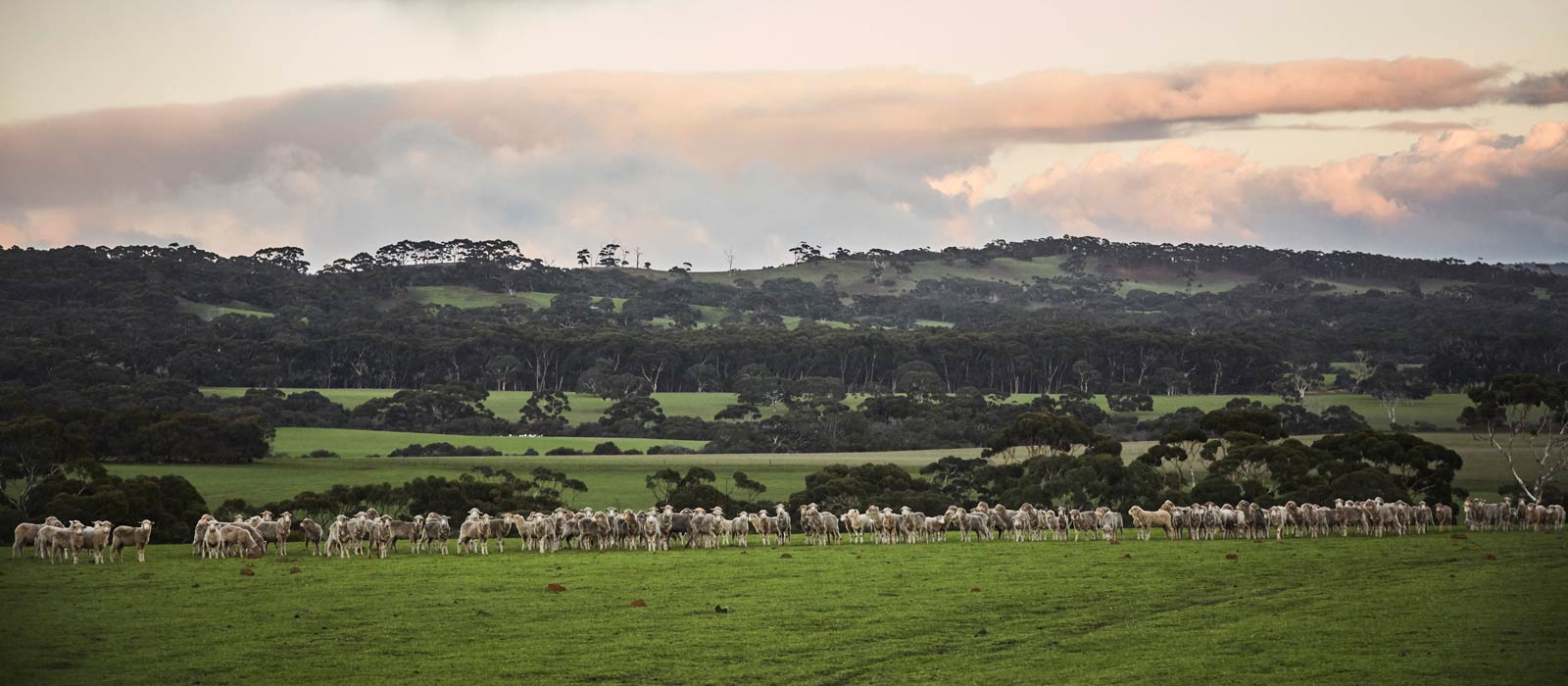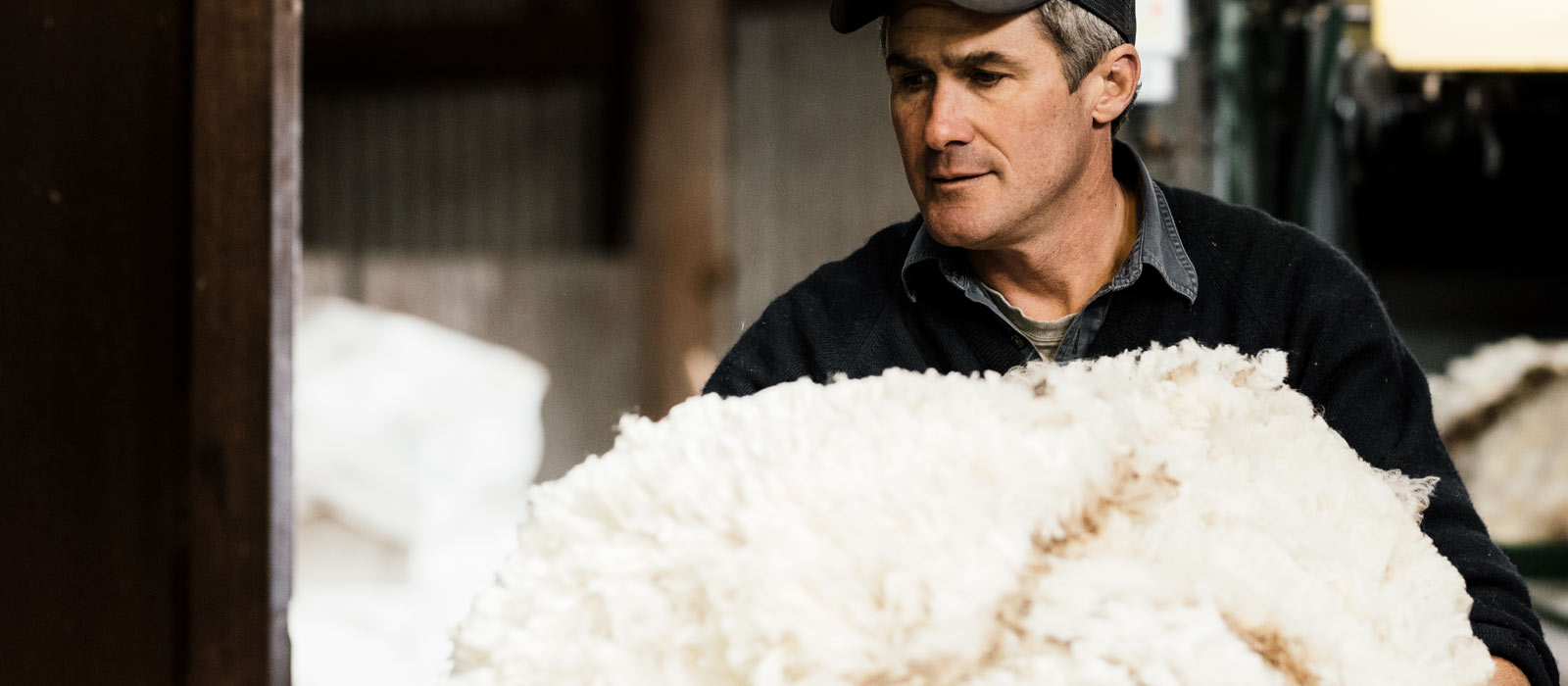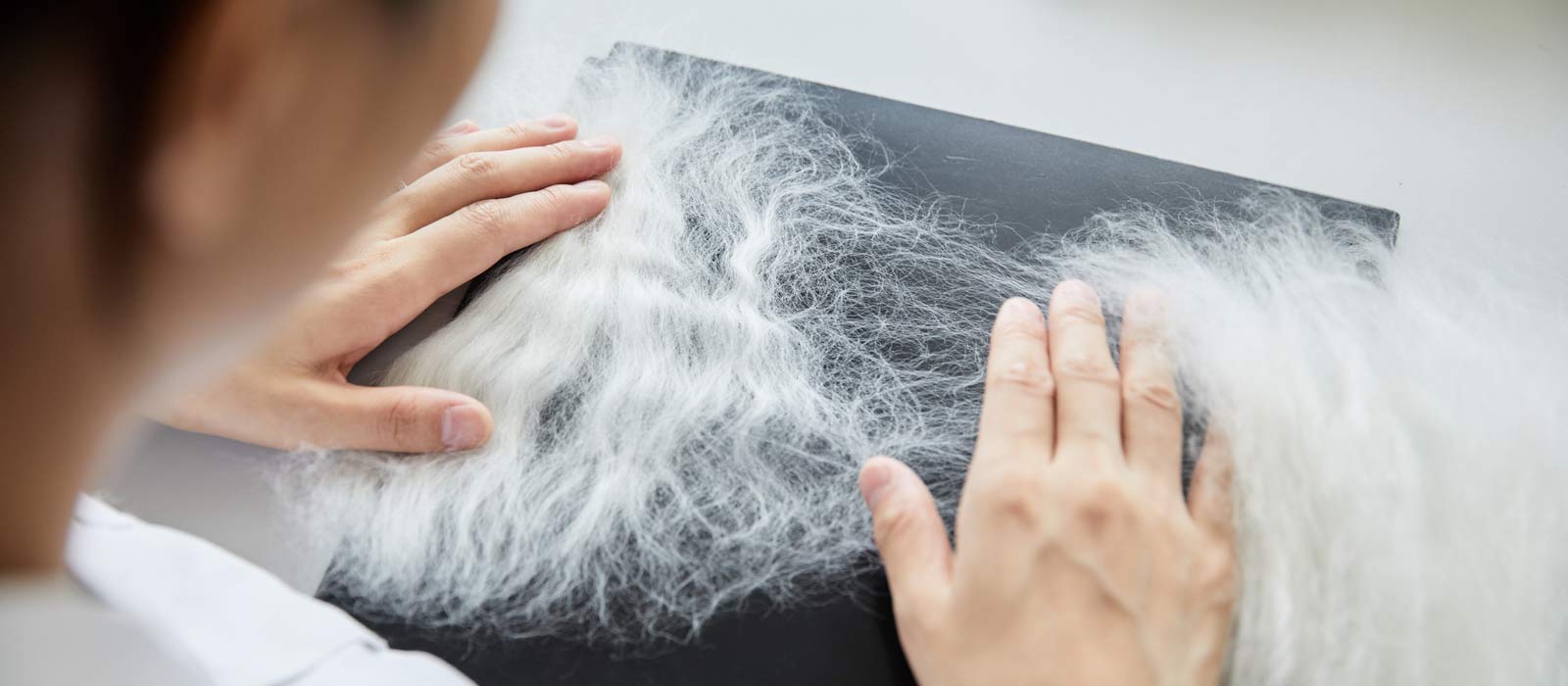Australian Merino wool is the world’s finest and softest wool in the world. Its natural benefits are so great that no other fibre - natural or man-made - can match it.
Australia also produces other types of wool, suitable for products such as wool bedding and home interiors, but it’s Merino wool that is most-suited for luxury clothing, high-performance sportswear and next-to-skin apparel.
Fashion designers love this unique fibre for its quality and versatility - nothing else feels like Merino wool, looks like Merino wool, or wears like Merino wool.

How is Merino wool made?
Australian woolgrowers produce the world’s finest wool from Merino sheep using sustainable farming practices. Unlike synthetics which are industrially produced from non-renewable fossil energy, Merino wool is a natural fibre grown year-round by Merino sheep, consuming a simple blend of natural ingredients including sunshine, water, fresh air and grass. Every year these sheep produce new fleece, making wool a completely renewable fibre.
Arguably the oldest-known animal fibre, wool is composed of a natural protein called keratin - the same protein found in human hair - with a small amount of calcium, sodium and fat. The surface of each fibre is covered in scales, which are important in making felts and traditional woollen cloths.

Merino wool is grown from Merino sheep.
Different types of wool
Not all wool is the same. Some wool is softer than cashmere, while others are hardier and more resilient, suitable for carpets and bedding. Wool can be divided into three main categories, based on the micron (diameter) of each fibre. One micron is equal to one millionth of a metre and fibre length is recorded in millimetres – these are the main measurements which determine the quality and use of the wool.
- Fine: Wool with the finest micron comes from Merino sheep and is used for high-quality, soft-handling fabrics and knitting yarns. Fine wool is highly valued by the world’s leading fashion houses and is the hero ingredient of many Woolmark collaborations.
- Medium: Medium micron wool can be produced from a type of Merino or produced by crossing one breed with another (crossbreeding). Medium wools are used in a variety of woven apparel cloths, knitting yarns and furnishings.
- Broad: Many different sheep breeds produce broader wools. Often these breeds are known as dual-purpose breeds because they are farmed with equal emphasis on meat and wool. Broad wool is useful for products such as carpets because of its strength and durability
The average micron of human hair is between 50 to 100 micron. Merino wool is generally less than 22 micron, which shows just how soft this premium fibre is.

Natural versus synthetic fibres
Natural fibres are produced by animals (wool) and plants (cotton) as fibrous materials that can be spun into yarn. Characteristics of natural fibres are that they:
- Serve a purpose in nature;
- Are produced by a living organism; and
- Grow spontaneously, without need for human intervention.
Synthetic fibres are derived from fossil-fuelled/petroleum-based oils.

Comparison of common apparel fibres.
Wool – along with alpaca and cashmere – has a unique scale structure, with differing patterns depending on the animal which they come from. Cellulosic fibres – cotton, silk and linen – and synthetic fibres such as polyester do not have these unique scales. These scales are important for protection, felting behaviour and the handle of finished products such as apparel. They also provide a natural water-resistant surface.

Merino wool versus cashmere
- Merino wool comes from Merino sheep – the breed of sheep offering the finest wool for luxury apparel and technical sportswear.
- Cashmere comes from the hair of goats.
- Years of innovative breeding have resulted in some ultrafine Merino wools to be naturally even finer than cashmere.
- The world’s best Merino wool comes from Australia, which provides 81% of the world’s superfine wool, from woolgrowers who employ sustainable farming practices.
- Cashmere primarily comes from Mongolia and China.
- One sheep provides about 4.5 kilograms of wool fleece, whereas one goat provides only 0.2-0.3 kilograms of cashmere down fibres.
- Merino wool is very easy to care for, with many wool clothes able to be washed in the washing machine.
Wool care
Caring for wool
You’ve bought it, bagged it, worn it, now it’s time to wash your favourite item of wool clothing. A luxury fibre, wool is easy to care for, and this simple guide will help prolong the life of your garment. Plus, with wool clothing not requiring as much washing as clothes made from other fibres, you can cut down on your energy bill and have more time to do the things you love. It’s win-win.